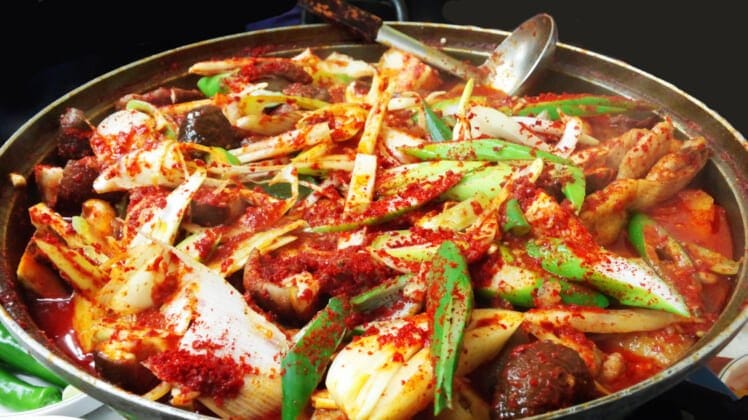An Introduction to Korean Cuisine: Must-Try Dishes and Culinary Traditions

Korean cuisine has a complex history, from a 13th-century Mongol invasion to Japanese colonization in the 1900s. The story of a country is often reflected in its food, whether it’s something simple like how the Mongols introduced black pepper, or complex, like changing a nation’s farming so that it could feed Japanese soldiers during wars.
Today, if you were cooking a traditional Korean recipe at home, rice would almost definitely be a part of the experience. However, during the war, rice was reserved for soldiers and the upper classes, leaving grains like barley for everyone else. Additionally, only those who could afford it were able to get white bread, pre-cooked noodles, and other imports.
The Cold War Split
The biggest change to modern Korean cuisine came because of the cold war. In 1945, Japan surrendered in the Second World War, leaving Russia controlling the north and the United States controlling the south of Korea. After three years, it was decided in 1948 that two governments would be established. Creating a North and South Korea.
Korean cuisine remained fairly similar between the north and south for a while, with people eating what was available, including rice and cheap meats. It wasn’t until 1963 when President Park Chung-hee took over South Korea that the country we know today started to form.
President Park Chung-hee industrialized South Korea, giving the country economic strength that ultimately created a middle class. During this adaptation, the amount of meat eaten by South Koreans skyrocketed. Plus, fewer grains and rice were consumed. It was bread and noodles for everyone.
The story of North Korea and its cuisine is unknown.
EXPLORE MORE: What makes Italian cuisine the world’s most popular?
Korean Cuisine Tradition
Pre-modern history, before the popularity of meat, seafood was the focal point of Korean cuisine. Traditional meals are based on countless side dishes. The amount would be representative of a family’s status.
These side dishes could include spicy sausage stew, known as budae jjigae or kimchi, which is salted and fermented vegetables. Also, in Korean tradition, everything is served together so if eating out, expect a table full of side dish deliciousness.
Common Korean flavors include sesame oil, chili, soybeans, soy sauce, garlic, and ginger.
Popular Korean Cuisine
Bulgogi: This is one of the most popular Korean meat dishes. Consisting of grilled beef that has been marinated in garlic and onions. The meat is served wrapped in lettuce and ssamjang sauce. The sauce is spicy and made with sesame oil, garlic, and green onions, among other ingredients.
Sundubu-jjigae: This spicy stew can be made with tofu, vegetables, mushrooms, and gochujang chili paste. It can also include beef, pork, and seafood, and traditionally includes a raw egg mixed in before serving.
Japchae: A traditional stir-fried noodle side dish, made with sweet potato, thinly cut vegetables, and beef. Some recipes for this dish include soy sauce, sugar, and mushrooms.
Korea On The Map
North Korea shares a border with mainland China and Russia. South Korea shares only a border with North Korea, and together both nations are surrounded by the Yellow Sea, the East China Sea, and the Sea of Japan.
MAKE THIS TONIGHT: Chicken Parmesan with Zoodles: A Delicious Weeknight Meal
Explore More About:Food and Drink